[section label=1. Introduction]
Toshiba Q Series Pro – A Hidden Gem?
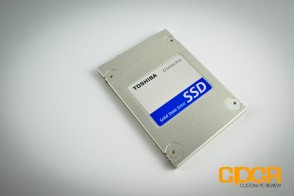 Generally when most of us think about SSDs, we think about a number of very common names such as OCZ, Kingston, ADATA and Corsair, but when it comes to the bulk of SSDs sold on the market, the major players are actually guys like SanDisk, Samsung, Crucial, and Toshiba, which we’ll refer to as Tier 1 manufacturers. These guys are high volume SSD manufacturers who not only produce actual SSDs themselves, but also own the fab that produces the NAND memory powering the SSD, which in turn gives them access to a stable supply of high quality NAND, control over NAND design, as well as control over NAND pricing. As you may expect, this a huge advantage in the market especially with so few Tier 1 SSD manufacturers in existence.
Generally when most of us think about SSDs, we think about a number of very common names such as OCZ, Kingston, ADATA and Corsair, but when it comes to the bulk of SSDs sold on the market, the major players are actually guys like SanDisk, Samsung, Crucial, and Toshiba, which we’ll refer to as Tier 1 manufacturers. These guys are high volume SSD manufacturers who not only produce actual SSDs themselves, but also own the fab that produces the NAND memory powering the SSD, which in turn gives them access to a stable supply of high quality NAND, control over NAND design, as well as control over NAND pricing. As you may expect, this a huge advantage in the market especially with so few Tier 1 SSD manufacturers in existence.
Now up until now many of these Tier 1 manufacturers have been operating a very quiet consumer business, instead focusing on the OEM and SI business rather than deal in the consumer space. However, with the popularity of SSDs on the rise, many of these Tier 1 manufacturers are jumping in for their own share of the market. A couple years ago, Samsung quietly launched the Samsung 470 which ended up becoming one of the top SSDs on the market. Since then, Samsung has really captured a huge chunk of the consumer SSD market with their newer Samsung 830 and 840 series SSDs, thanks to their strong marketing push along with simply having an excellent product at a reasonable price. SanDisk has also jumped into the market by quietly launching the SanDisk Extreme last year and recently launching the Extreme II that we recently reviewed. Of course with all these Tier 1 manufacturers jumping into the consumer market, it is no surprise that Toshiba is interested in taking of piece of the SSD market.
Toshiba Q Series Pro Specifications
| Manufacturer | Toshiba | Toshiba | Toshiba |
|---|---|---|---|
| Model | Q Series Pro | Q Series Pro | Q Series Pro |
| Form Factor | 7mm, 2.5″ SATA | 7mm, 2.5″ SATA | 7mm, 2.5″ SATA |
| Capacity | 128 GB | 256 GB | 512 GB |
| Controller | Toshiba TC358790XBG | Toshiba TC358790XBG | Toshiba TC358790XBG |
| NAND | 19nm Toshiba MLC Toggle NAND | 19nm Toshiba MLC Toggle NAND | 19nm Toshiba MLC Toggle NAND |
| Sequential Reads | 554 MB/s | 554 MB/s | 554 MB/s |
| Sequential Writes | 512 MB/s | 512 MB/s | 512 MB/s |
| Interface | SATA 3 6GB/s | SATA 3 6GB/s | SATA 3 6GB/s |
| Warranty | 3 Years | 3 Years | 3 Years |
Toshiba’s competing product comes in the form of the Toshiba Q Series Pro, which we’ll be reviewing today. Toshiba appears to have modeled their SSD lineup off of Samsung’s highly successful 840 Series with Toshiba releasing their latest Q Series and the Q Series Pro SSDs. The Toshiba Q Series Pro offers greater performance in comparison to its vanilla sibling. The Q Series Pro is expected to arrive in 128GB, 256GB, and 512GB capacities. But to our surprise (according to Toshiba’s website), all capacities have the same exact performance specifications . Under the hood, the Q Series Pro is powered by Marvell hardware and utilizing Toshiba’s finest 19nm Toggle Mode 2.0 MLC NAND. Spec-wise, the Q Series Pro is one lightning-fast SSD with sequential read/write speeds of 554 MB/s / 512MB/s respectively.
So far so good, let’s take a closer look!
[section label=2. A Closer Look (Exterior)]
A Closer Look at the Toshiba Q Series Pro 256GB
Here’s a look at the packaging for the Toshiba Q Series Pro 256GB. The packaging for the Q Series Pro is actually quite similar to the vanilla Q Series, but make no mistake, the Q Series Pro is a faster drive than the standard model.
Inside the packaging we get some documentation, a 2mm riser, and the Q Series Pro SSD itself.
Here’s a closer look at the Q Series Pro SSD. The entire unit is coated with a metallic material and there’s some pretty simple stickers in the front and the back to let you know who made the drive, what the model is, and what the capacity is. It’s quite possibly one of the most dull looking SSDs on the planet (probably because Toshiba SSDs have always been oriented for OEM/SIs), but for something that spends most of its time sitting inside a case, it doesn’t bother most users. Another interesting thing carried over from the OEM/SI heritage seems to be the model number… HDTS325XZSTA?
The Toshiba Q Series Pro requires the use of a SATA 6Gb/s port to achieve optimal performance.
Like most modern SSDs, the Toshiba Q Series Pro adopts the 7mm formfactor which allows it to fit into smaller, thin and light notebooks. For those who need a 9mm formfactor SSD for use in larger notebooks, Toshiba includes a 2mm riser.
[section label=3. A Closer Look (Interior)]
A Closer Look at the Toshiba Q Series Pro 256GB
Opening up the Q Series Pro is fairly easy; only four standard Phillips head screws holding the casing together. An additional four Phillips head screws secure the PCB to the casing. With the PCB out of the casing, we see eight NAND packages and the SSD controller, all of which include thermal pads for improved heat dissipation.
Removing the thermal pad, we can see Toshiba using a Toshiba branded SSD controller on the Q Series Pro. The model number for the controller is TC358790XBG. Unfortunately what you see here is not actually a Toshiba controller, but rather a custom Toshiba implementation of Toshiba firmware on top of Marvell hardware similar to what we saw with the Indilinx Everest series of SSD controllers. Not much is known about the exact Marvell hardware that’s being used here, but looking at the NAND onboard, it is definitely an eight channel controller. We assume it is the Marvell 88SS9187 or a custom variant.
To our surprise, the space to the left of the controller is missing a DRAM buffer which has traditionally been the norm with Marvell-based controllers. The DRAM cache generally helps improve write performance, reduce write amplification, and improve wear leveling by consolidating data prior to writing it to NAND storage. It’s interesting to see that Toshiba has space planned for the DRAM buffer, but chose not to implement it here. Seeing how Toshiba isn’t over-provisioning their drive, it’s possible that Toshiba has instead directly packaged the DRAM into the controller.
**Update 01/19/2014**
At the time of writing, it was believed that Toshiba did not in fact have any sort of in-house controller technology and given that the previous Q Series drives had used Marvell technology, it seemed like a Marvell controller could be a very likely controller for the Q Series Pro. However at CES 2014, I spoke to a couple Toshiba representatives who told me that the controller on the Q Series Pro is in fact in-house and isn’t sourced from Marvell. Unfortunately, I didn’t get the opportunity to speak with a Toshiba SSD product manager about the controller, but I have reached out for further information.
Updates will become available as soon as I receive a response.
Here’s a look at the onboard NAND inside the Q Series Pro SSD. Toshiba uses eight packages of their very own high performance 19nm MLC Toggle 2.0 NAND (Model #TH58TEG8CDJBASC) onboard the SSD. Each NAND package includes four NAND dies capable of up to 400Mbps of bandwidth.
[section label=4. Test Setup]
Haswell Test Bench
As of October 5, 2013, we’ve upgraded our storage testing system to a Z87/Haswell testing platform. All SSDs used for comparison here have been updated to the latest firmware as of October 2013. Performance tests from storage reviews prior to that date should not be compared to our latest reviews.
| System | CyberPowerPC Gamer Xtreme 4200 |
|---|---|
| CPU | Intel Core i7 4770K |
| Motherboard | ASUS Z87-A |
| Memory | Kingston HyperX Genesis 16GB DDR3 2133MHz |
| Graphics | Intel HD4600 Graphics |
| Storage | OCZ Vertex 4 256GB |
| Power Supply | Corsair HX650 |
| Case | HSPC High Speed Tech Station |
| Optical Drive | ASUS OEM DVD Drive |
| Operating System | Windows 8 64 bit & CentOS 6.4 |
Special thanks to CyberPowerPC, Kingston, OCZ Technology and HSPC for sponsoring our test bench!
Crystal Disk Info
Toshiba Q Series Pro 256GB
This Crystal Disk report reveals that the Toshiba Q Series Pro 256GB supports S.M.A.R.T., NCQ, and TRIM. Interestingly enough, it seems to also be referred to as the THNSNJ256GCST. So that’s three names: the Q Series Pro, HDTS325XZSTA, and THNSNJ256GCST. What’s next?
[section label=5. ATTO Disk Benchmark / AS SSD / Crystal Disk Mark]
Toshiba Q Series Pro 256GB Performance
ATTO Disk Benchmark v2.46
ATTO Disk Benchmark is one of the industry’s oldest and most popular benchmarks for testing disk read/write speeds. This benchmarks allows read and write testing using predefined block sizes and gives us a good idea of read/write speeds with different sized files. Most SSD manufacturers these days prefer using this benchmark when advertising SSDs as it tests using compressible data, which tends to yield better performance.
Performance Analysis
Starting with ATTO Disk Benchmark, here we can see the Toshiba Q Series Pro 256GB performance throughout different block sizes and queue depths. These tests demonstrates the drive’s ability to operate at 553MB/s sequential read and 520MB/s sequential write speeds, which closely matches Toshiba’s published specifications for the drive at 554 MB/s sequential reads and 512 MB/s sequential writes.
AS SSD Benchmark
AS SSD is a very commonly used benchmark used to measure SSD performance in a number of categories. Here, tests are run using incompressible data at QD1. It also outputs a final score at the conclusion of the test based off the read and write performance of the drive.
Performance Analysis
AS SSD confirms the high-performance of the Q Series Pro. Performance here is reasonably fast, but not groundbreaking.
Crystal Disk Mark 3.0.1 x64
Crystal Disk Mark is another popular benchmark which allows us to measure both sequential read/write speeds as well as random read/write speeds. With this benchmark, tests can be run using both random fill (incompressible data) and 0 fill (compressible data). Realistically in typical computer usage scenarios, data being transferred will consist of a mixture of both incompressible and compressible data.
Performance Analysis
Looking at our Crystal Disk Mark performance figures, we can immediately see how the Toshiba Q Series SSD doesn’t discriminate between compressible and incompressible data, which suggests that it’s not using SandForce-based controller technology. Like what we saw in the AS SSD benchmark, performance here is quite decent and ranks among the upper tier of SSDs.
[section label=6. PC Mark 7 / PC Mark 8]
Toshiba Q Series Pro 256GB Performance
PC Mark 7
The PC Mark 7 storage test evaluates the SSD under many different real world environments such as gaming, multimedia editing, etc. This closely represents the SSD’s performance under real world situations.
PC Mark 8
The PC Mark 8 storage test is similar to storage tests found in PC Mark 7. The PC Mark 8 storage test evaluates SSDs under many real world applications such as gaming, video editing, photo editing, etc. and is well regarded among the SSD industry.
Performance Analysis
Toshiba has managed to impress us as the Q Series Pro achieved some of the highest scores we’ve seen on any SSD we’ve tested to date. In PC Mark 7, the Q Series Pro performed only slightly slower than our all time favorite, the Samsung 840 Pro. And in PC Mark 8, the performance was only slightly behind the Samsung 840 Pro and the Samsung 840 EVO 750GB.
[section label=7. FIO – FOB]
Toshiba Q Series Pro 256GB Performance
FIO (Flexible I/O Tester)
FIO, which stands for Flexible I/O Tester, is basically what its name says – a flexible I/O tester / I/O workload generator. Whereas all the benchmarking tools we’ve used previously are fantastic, easy to use benchmarking tools that provide a good snapshot of SSD performance, they do lack a lot of versatility, especially for more complex and in-depth operations such as custom queue depths, block sizes, test run times, etc. While the testing that follows may not pertain to typical client usage, they do help give us a much more in-depth look at each individual product’s strengths and weaknesses when they’re pushed to the limits.
FIO – FOB (Fresh Out of the Box) Testing
When SSDs are brand new and Fresh Out of the Box, they’re generally able to perform at or outperform their advertised speeds, but unlike traditional hard drives, performance on SSDs begin to degrade over time as they become more and more used. This is because while SSDs are new, all bits on the SSD are empty, so they can instantly be programmed with data. However, once data gets programmed in, even if it’s deleted in the filesystem the actual data will still stay programmed on the NAND itself unless some sort of garbage collection routine comes in to wipe the data. Unfortunately, in order to write new data onto “dirty” NAND, the NAND needs to go first through an erase cycle to erase the old data before a program cycle can happen to program new data, which as you may imagine takes more time than just a simple program cycle. As this only happens when writing new data onto the SSD, you’ll generally see less performance degradation on reads and more performance degradation on writes.
For our FOB testing, we run a secure erase on the SSD then run each test sans any preconditioning. This will provide us with the highest level of performance the SSD is capable of and is likely never to be seen ever again once the SSD goes into a used state.
Our testing will include 4K read testing, 4K write testing, and 4K 70/30 read/write mix testing at queue depths of 1,2,4,8,16,32,64,128,256. The reason we’ve also included 4K 70/30 read/write mix testing is simply because most real world workloads will always fall somewhere between 0% write and 100% write rather than one or the other. Since client usage is much more read heavy, we’ll be using the 70/30 read/write mix.
For general client usage, performance will fall somewhere between queue depths of 1-4 whereas servers and other enterprise applications will easily see queue depths of 32 or greater.
Performance Analysis
Our test observes the Q Series Pro’s performance in the FOB state. Random read performance is acceptable with a maximum speed of 93,334 IOPS at higher queue depths. However, overall performance for both pure reads and pure writes are lower than our other SSDs, especially in lower queue depths.
[section label=8. FIO – Steady State]
Toshiba Q Series Pro 256GB Performance
FIO – Steady State Testing
After prolonged use of an SSD, they will generally reach “steady state”. The FOB state is the “best case scenario” for SSD performance while “steady state” is going to be your worst. Here, we ran the exact same set of benchmarks we just completed in the FOB state; except this time around, we’ll be preconditioning the drive by filling 100% of the drive’s LBAs with two sequential passes of 128k data. Next, we hammered the drive with two full passes of random 4K data for six hours.
Performance Analysis
Without a doubt, this was the most brutal test among our benchmarks. Random read performance looks to be a major focus with the Q Series Pro with random reads ending up well over the 92,000 IOPS at higher queue depths making it very obvious Toshiba tuned the Q Series Pro for consumer usage. Although random write performance came in as the lowest of the group, the Q Series Pro does exceptionally well in our 70/30 random read write testing, only coming in behind the SandForce-based Kingston HyperX 3K at lower queue depths.
[section label=”9. FIO – Consistency”]
Toshiba Q Series Pro 256GB Performance
FIO Consistency Testing
Another one of the benefits of testing with FIO is the flexibility of running consistency tests, which is one of the most important metrics when considering SSDs going forward. Looking at the results of our benchmarks such as ATTO Disk Benchmark and Crystal Disk Benchmark, we can see that practically every top tier SSD is capable of saturating SATA 6Gb/s in the FOB state. However, what really differentiates these SSDs is their ability to hold a certain level of performance even after extended periods of use.
For our consistency testing, we used a fairly standard method, which includes both filling up 75% of capacity (consumer use) as well as 100% capacity(enterprise use) twice with sequential 128k data followed by the actual test itself, which is simply running 4K random writes at a queue depth of 32. By recording the IOPS every second for 2,000 seconds, we’re able to get a good look at what kind of performance can be expected when the drive is relatively new, when it’s heading towards steady state, and when it’s actually in steady state.
[tabgroup]
[/tabgroup]Performance Analysis
Looking at our consistency performance figures here, it’s quite interesting to the different performance profiles possible despite both the SanDisk Extreme II and the Toshiba Q Series Pro being based off Marvell controller hardware. Whereas SanDisk really optimized their Marvell powered SSD for long term steady state performance, Toshiba puts less focus here with IO scattered consistency once the SSD enters steady state. As usual, SandForce still leads ahead due to their use of over-provisioning.
[section label=10. Power Consumption]
Toshiba Q Series Pro 256GB Power Consumption
Previously, our power consumption analysis only tested for idle and maximum load power consumption, but we felt that this was a bad way to accurately measure power consumption. The reason for this is because SSDs tend to be bursty while in operation and will spike in power usage, but only for a second. As such, many of our SSDs appeared to have even higher power consumption than traditional hard drives, which is untrue.
In order to improve our reading of power consumption, our solution was to run a test closer to the real-world and record a trace on the power consumption during testing. Since PC Mark 7 has been recognized by the industry as a fantastic real-world benchmark, we’ll be running our power consumption test while running the benchmark.
All tests below are measured by tapping our calibrated B&K Precision 5491B Bench Multimeter directly into the 5v line running from the power supply to the drive. All testing here is conducted with “HIPM/DIPM” enabled and “AHCI Link Power Management – Adaptive” set to 0 milliseconds for maximum power efficiency.
[tabgroup]
[/tabgroup]Performance Analysis
Thanks to Toshiba’s use of 19nm NAND, the removal of the DRAM buffer, and tweaks to the firmware, Toshiba is now officially the first SSD manufacturer to be competitive against Samsung in terms of power consumption. Idle power rested at a mere 0.05w, matching Samsung’s 840 Pro. That said, in comparison to all of our SSDs tested today, the Toshiba Q Series Pro is the clear winner here, drawing the least amount of power in the entire run averaging a low 0.28w.
[section label=11. Conclusions]
Toshiba Q Series Pro 256GB Conclusions
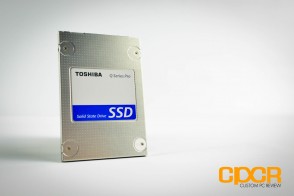 Prior to this review, I did not really expect much out of the Q Series Pro. Nobody talks about Toshiba SSDs and between the boring naming scheme, boring chassis design, and little marketing effort on Toshiba’s part, I didn’t see the Q Series Pro as a high-performing competing product. Luckily, I was wrong.
Prior to this review, I did not really expect much out of the Q Series Pro. Nobody talks about Toshiba SSDs and between the boring naming scheme, boring chassis design, and little marketing effort on Toshiba’s part, I didn’t see the Q Series Pro as a high-performing competing product. Luckily, I was wrong.
Performance on the Q Series Pro isn’t bad at all given Toshiba’s heavy tuning of the firmware towards read performance. Considering the fact that most consumer usage consists of reads rather than writes, the Q Series Pro actually came in second only to the Samsung 840 Pro in our PC Mark 7 and PC Mark 8 testing. Add in the fact that the Q Series Pro is lacking a DRAM buffer, it’s difficult to say what kind of performance we can see with one included. I can easily see it improving random write performance which could greatly improve random write consistency and steady state performance. Toshiba Q Series Pro Plus, anyone?
Power consumption on the Toshiba Q Series Pro really shined in our testing pulling some of the lowest power consumption figures we’ve seen to date. Idle power consumption matched the previously undefeated Samsung 840 Pro at 0.05w and the unit managed to keep even lower power than the Samsung 840 Pro throughout our entire trace test. With the excellent power consumption to performance ratio, it’s quite obvious why so many OEMs and SIs opt for Toshiba SSDs.
| Manufacturer | Toshiba | Toshiba | Toshiba |
|---|---|---|---|
| Model | Q Series Pro | Q Series Pro | Q Series Pro |
| Capacity | 128 GB | 256 GB | 512 GB |
| Street Price | $99.99 | $189.99 | $373.94 |
| Price/GB | $0.78 | $0.74 | $0.73 |
| Check Price | Click Here | Click Here | Click Here |
Last but not least, I hoped to see decent pricing on the Toshiba Q Series Pro and luckily Toshiba has delivered a value product. The Toshiba Q Series Pro 256GB reviewed today is currently listed for $189.99 on Amazon, which is roughly $0.73/GB. It is priced cheaper than the Kingston HyperX 3K 240GB going for $0.75/GB, the Samsung 840 Pro 256GB going for $0.88/GB, and is only slightly more expensive than the TLC NAND-based Samsung 840 EVO 250GB going for $0.72/GB. Although the Q Series Pro only offers a 3 year warranty for their SSDs, it’s still an extremely good deal. If a 5 year warranty version packaged with a DRAM buffer and a slightly tuned firmware for consistency were available for under $0.90/GB, Toshiba would be an extremely competitive high-end SSD manufacturer. They’ve got the resources and the expertise, so why not?
Despite the disorienting naming scheme and the dull-looking chassis, the Toshiba Q Series Pro offers great performance, great pricing, low power consumption, and it’s backed by a Tier 1 manufacturer with a great track record. It’s seriously a hidden gem for those in the market for a low cost, top tier SSD. I’d highly recommend it.
Sample provided by: Toshiba
Available at: Amazon

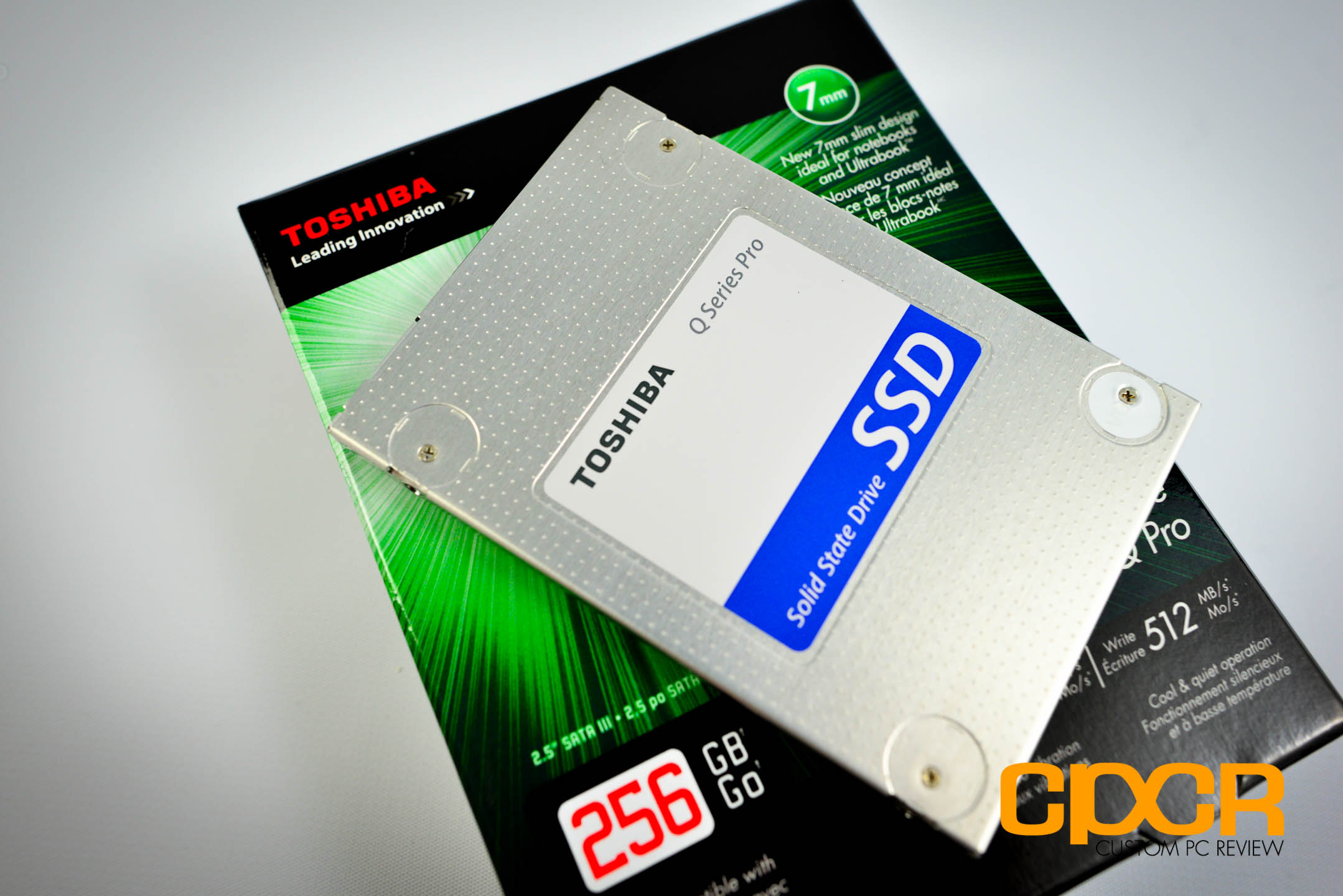
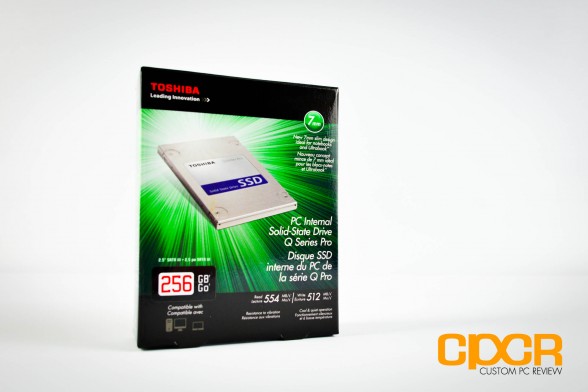
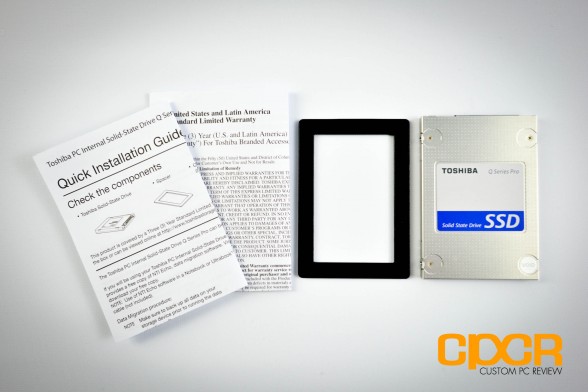
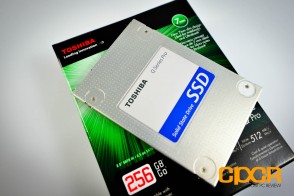
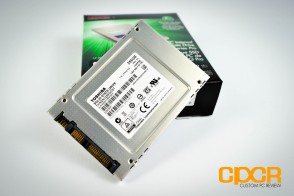
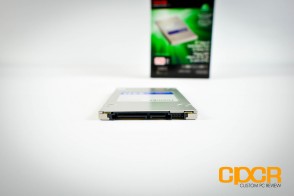
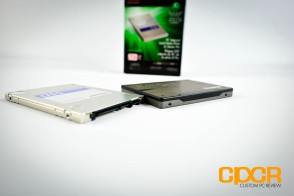
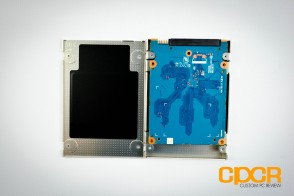
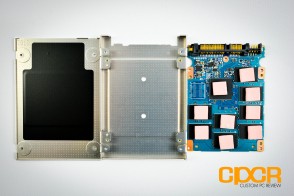
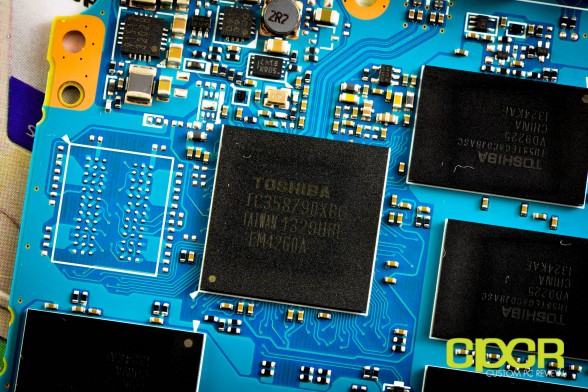
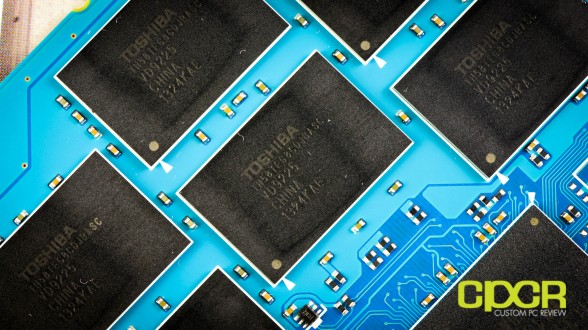
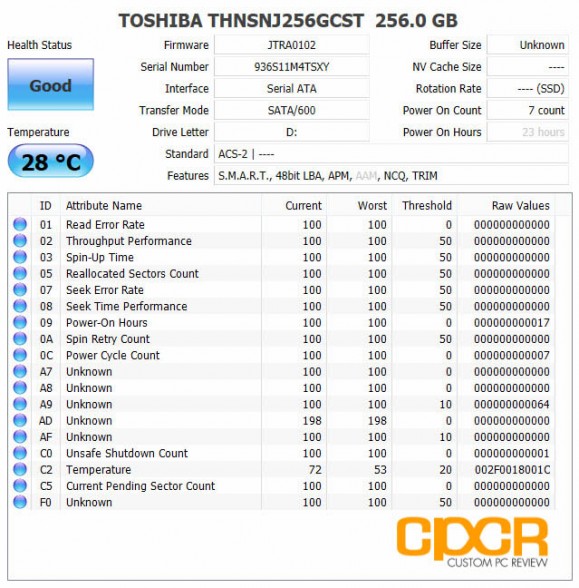
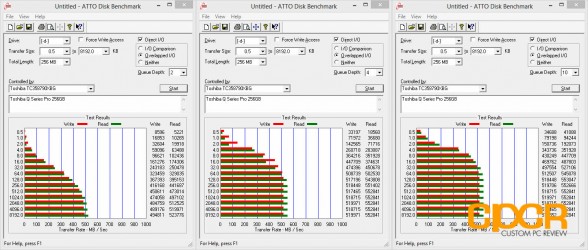
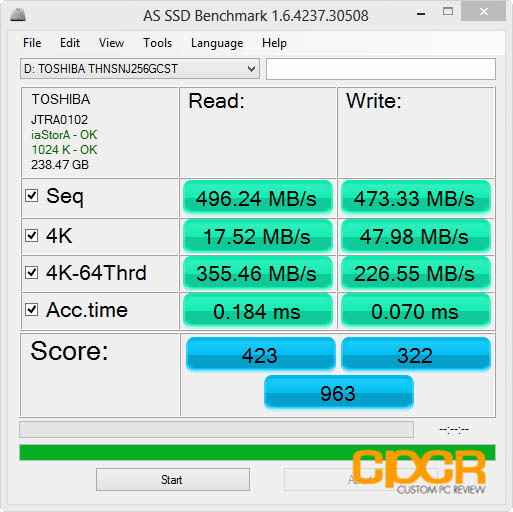
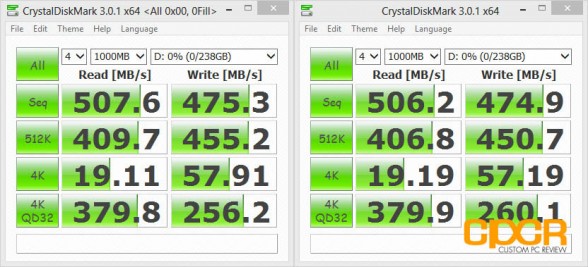
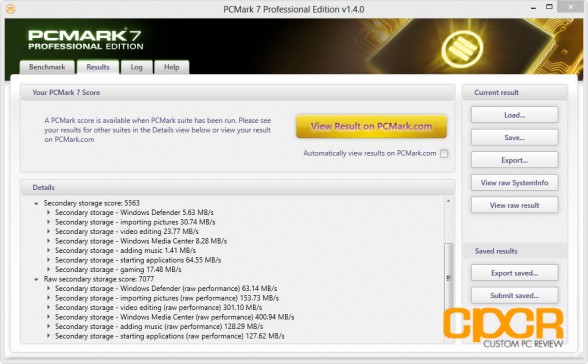
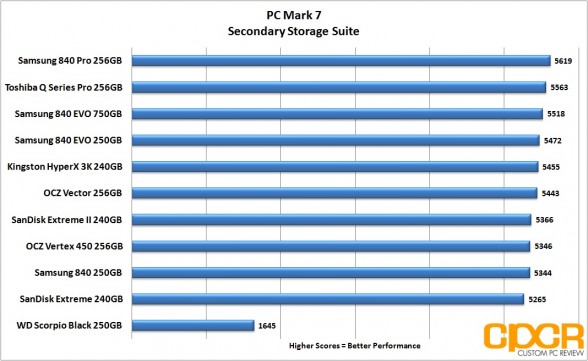
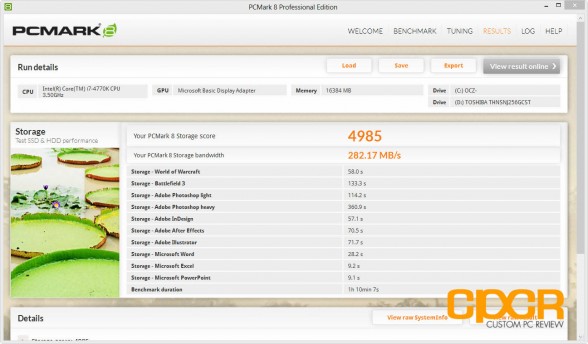
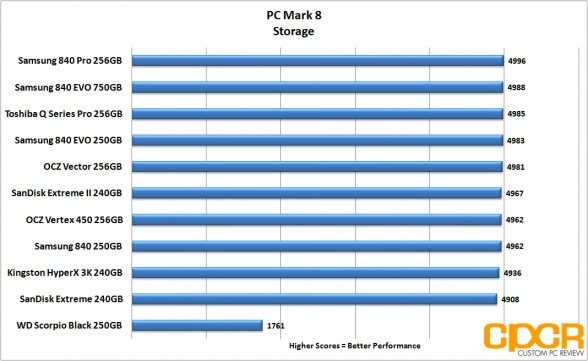
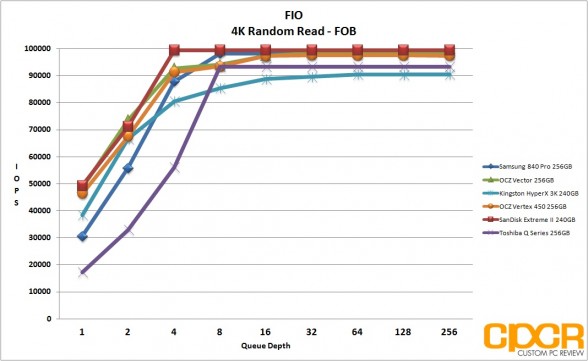
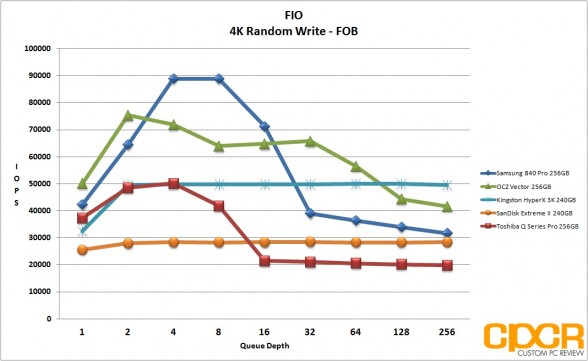
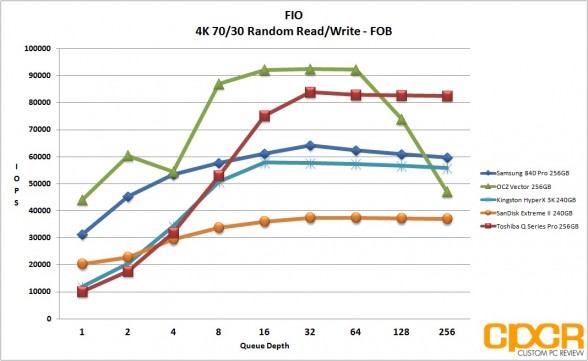
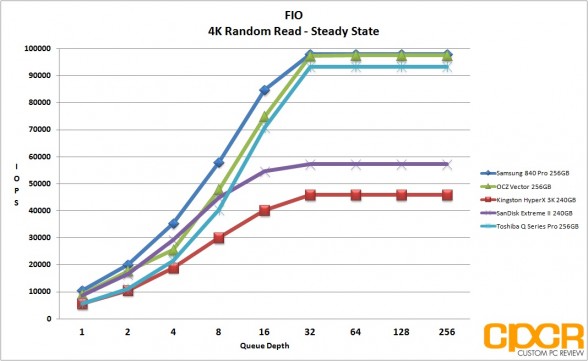
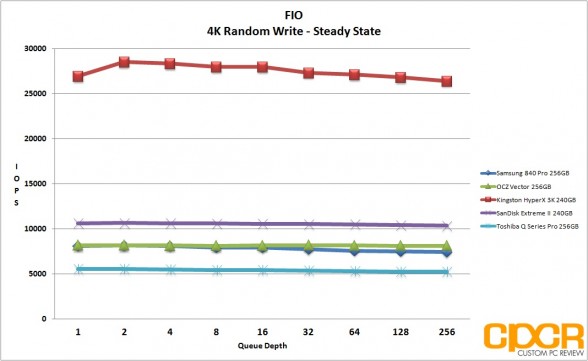
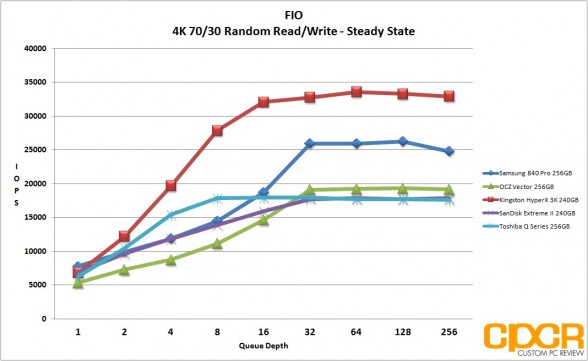
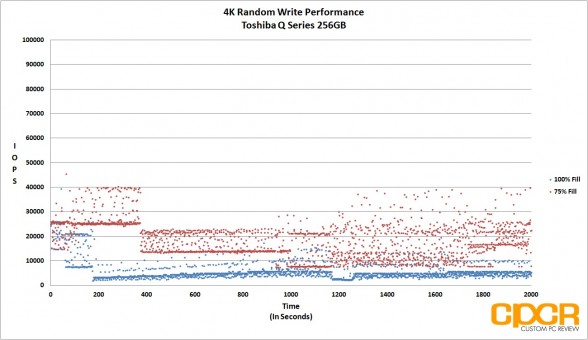
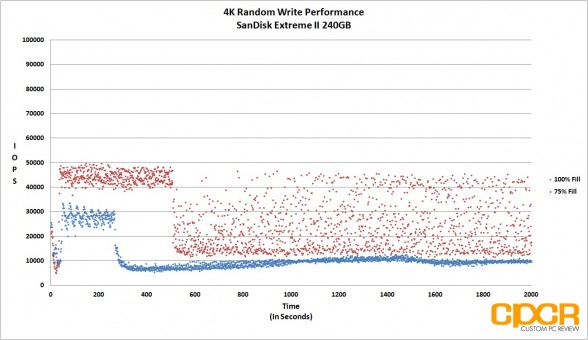
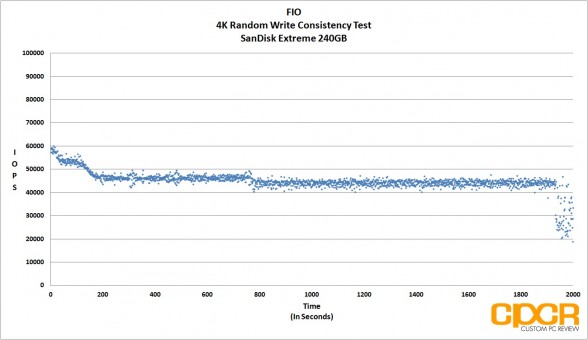
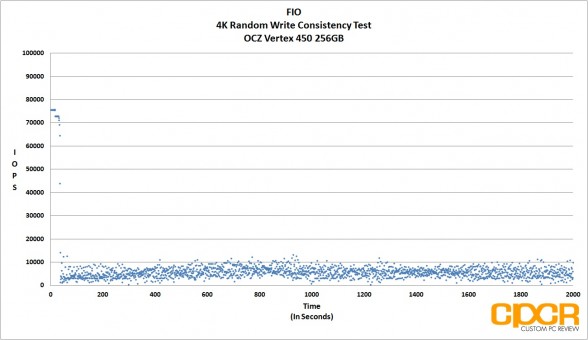
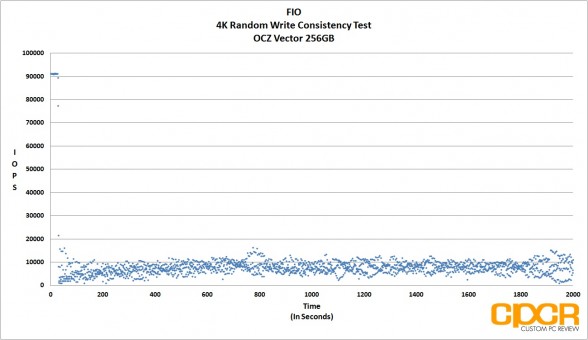
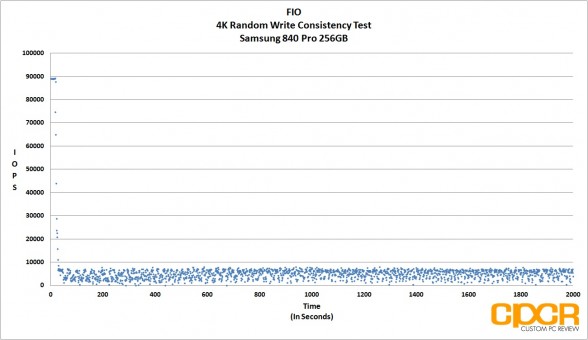
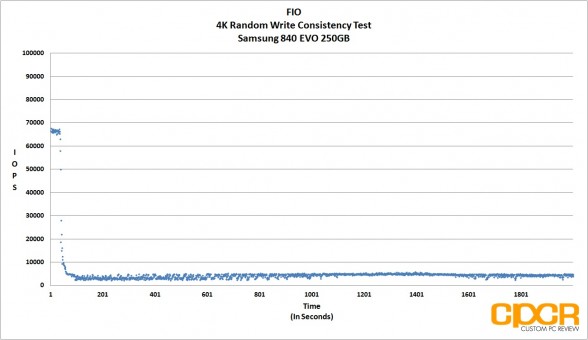
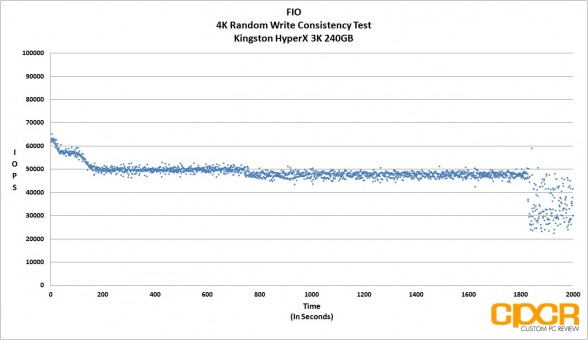
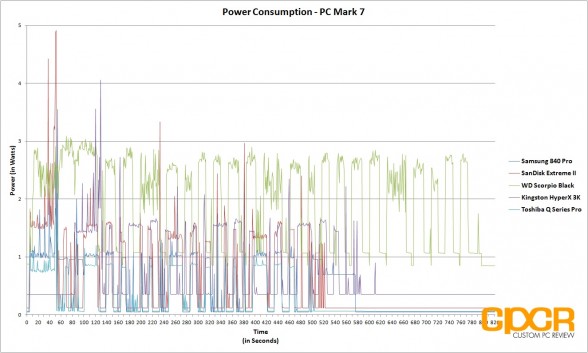
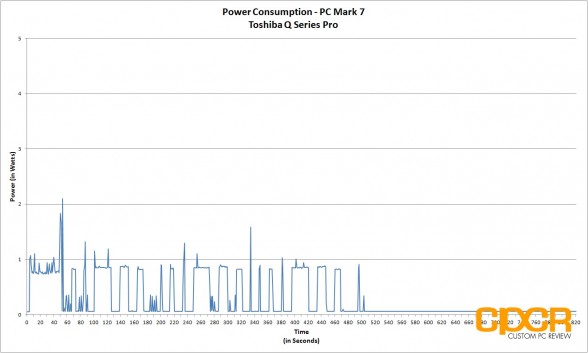
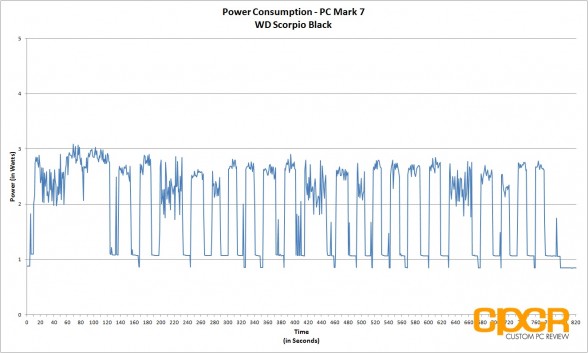
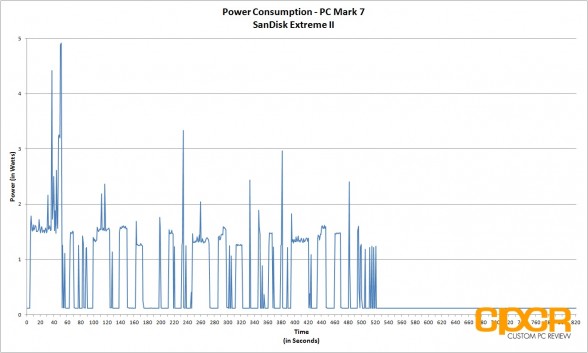
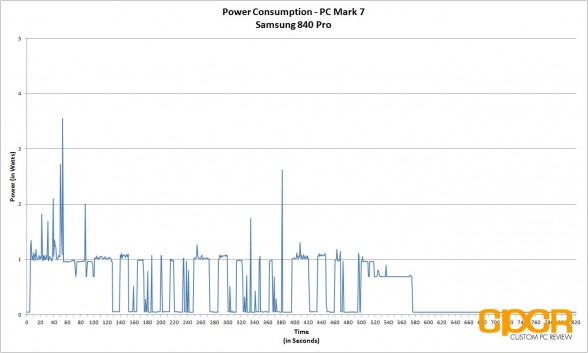
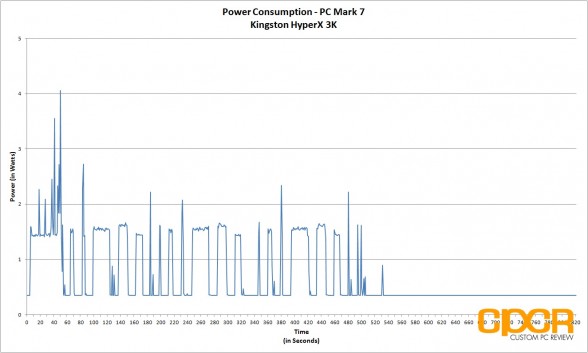
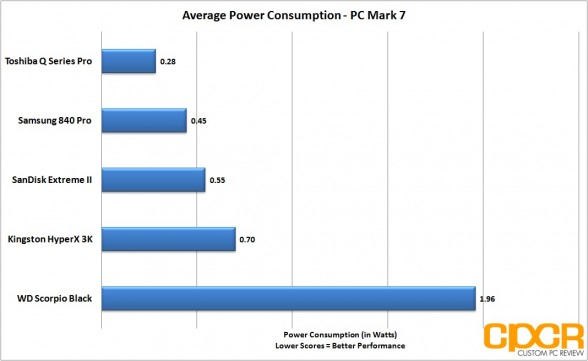

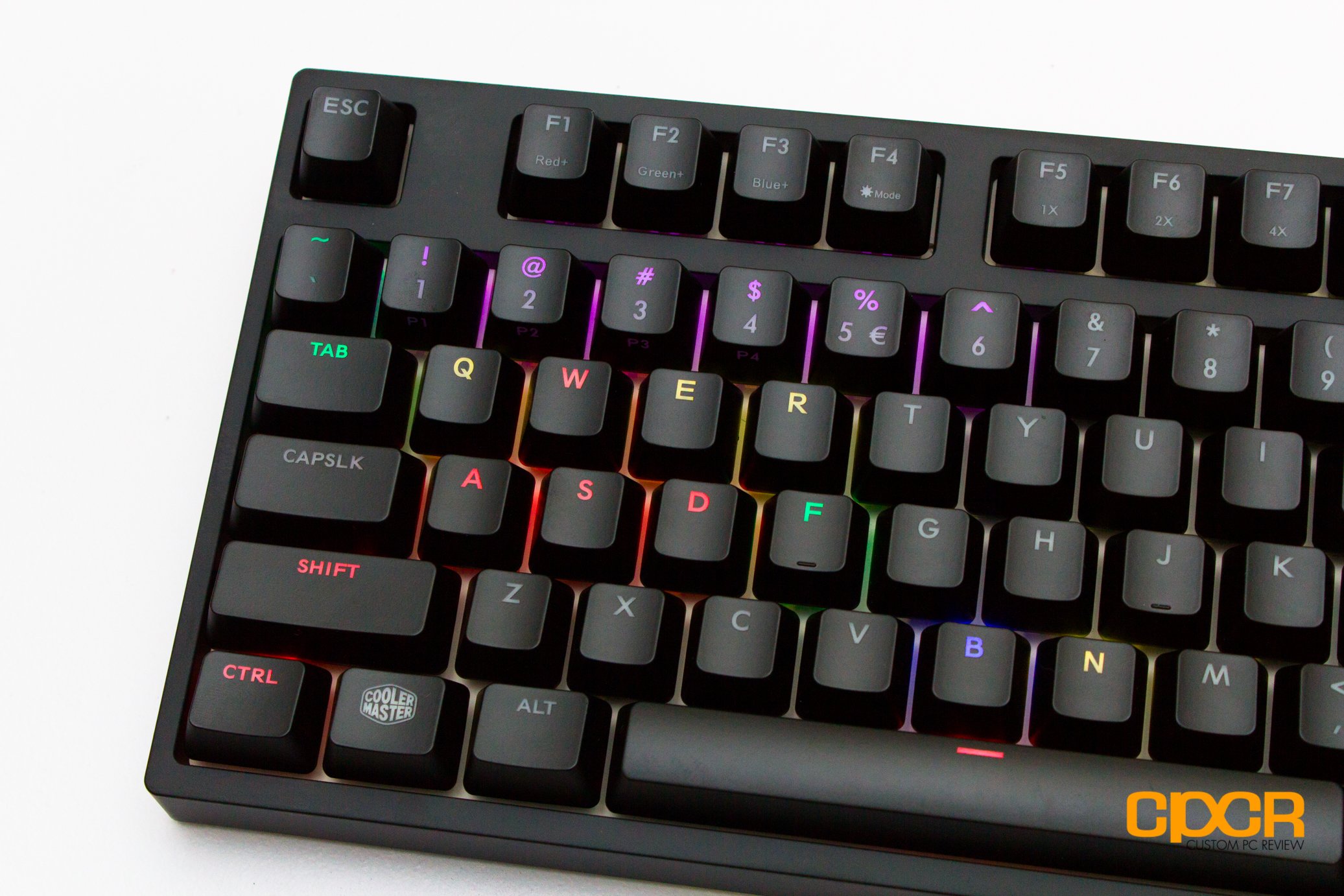
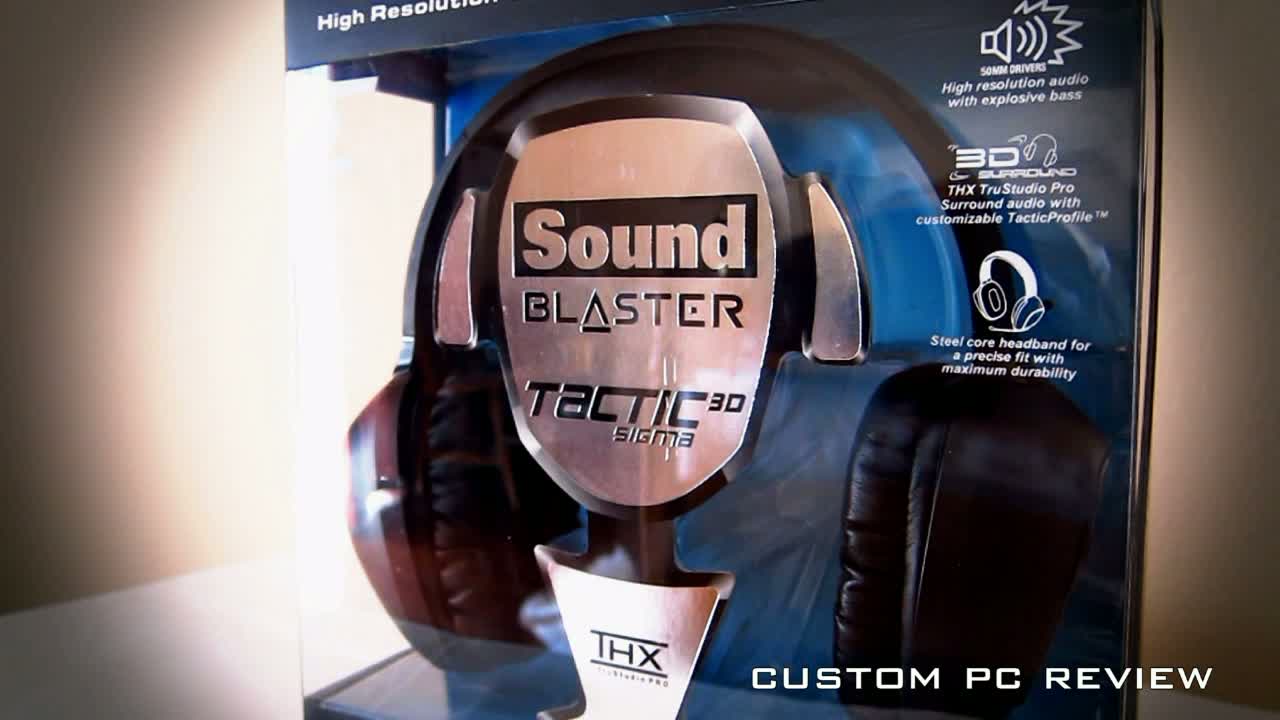
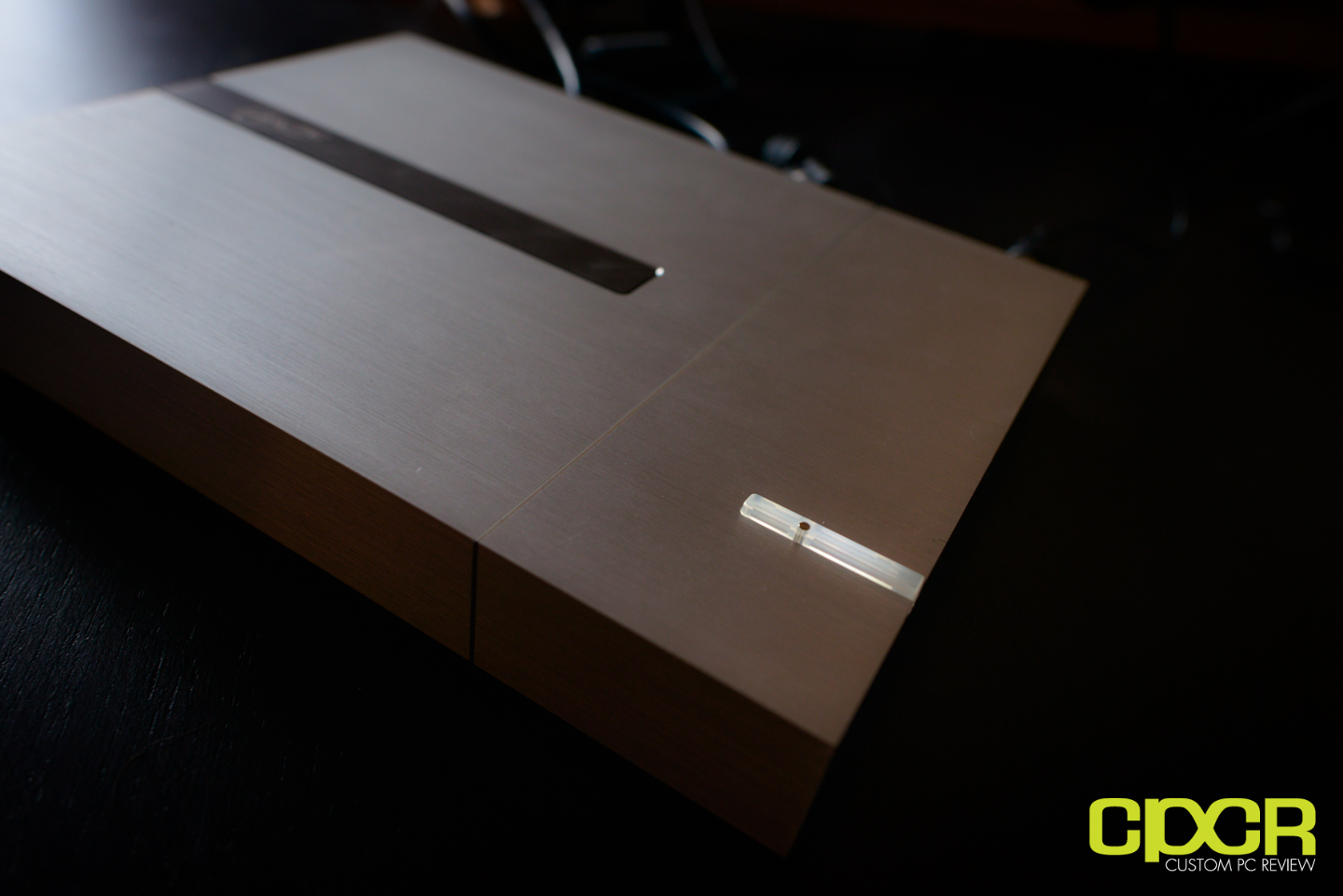
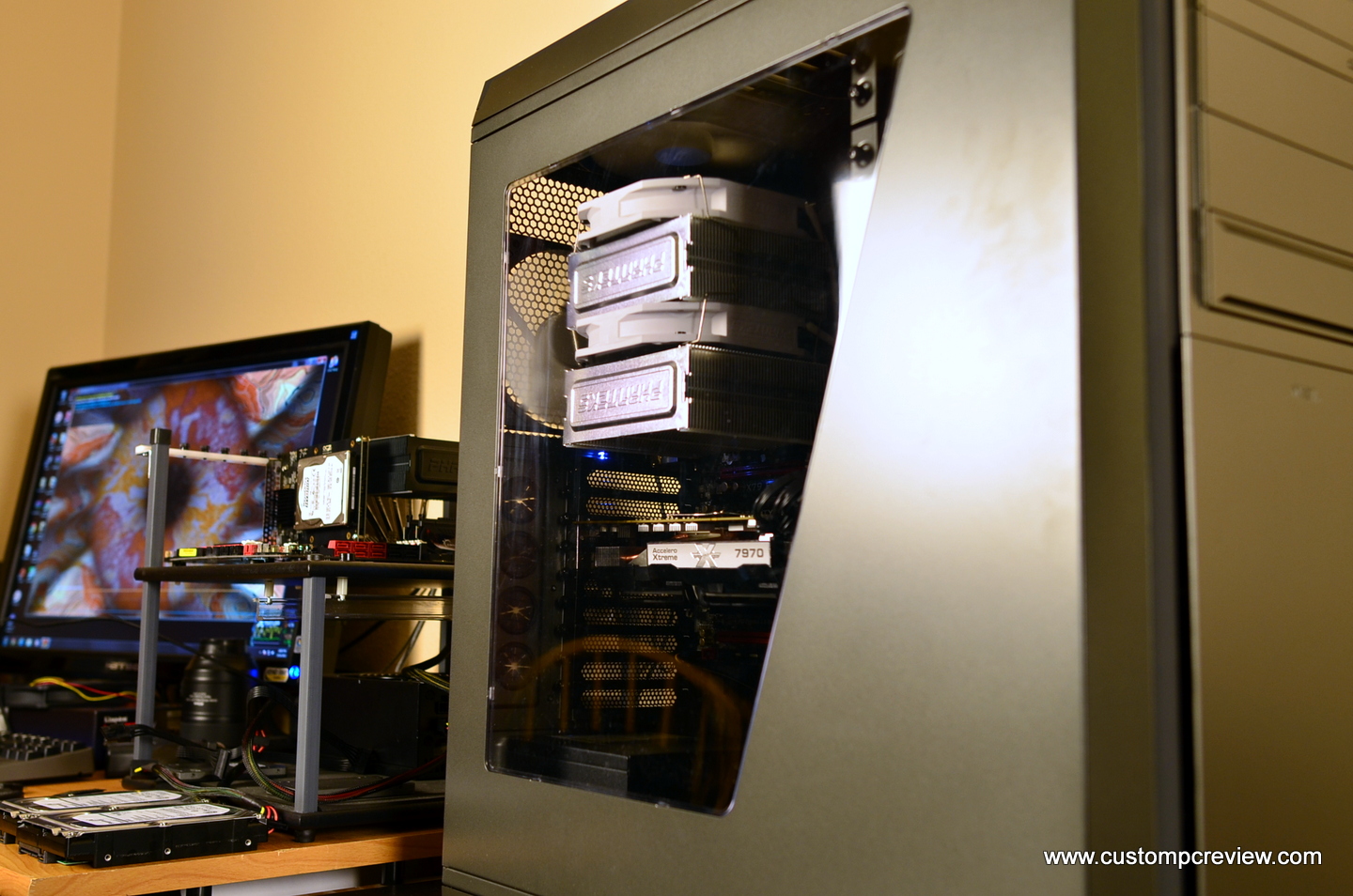
Finally a great review of the q series !
I have a couple of questions…
How does the “pro” compare with the “non pro” version ?
What about power-loss reliability ?
I’m trying to decide between a q series (128gb) vs 840evo (120gb).
Hey Domi, glad you enjoyed the review!
Not 100% sure on pro vs non-pro since I never got a non-pro to checkout, but from what I’ve seen, the pro edition is a bit faster than the non-pro. The non-pro is based on Marvell controller tech, but we’re not sure about the pro just yet. Unfortunately, I haven’t been given a clear cut answer from Toshiba regarding that. I was originally led to believe it may have been a Marvell part, but at CES speaking with some guys from Toshiba there, it may not actually be the case. If you’re deciding between the pro and non-pro though, get the pro. Doesn’t seem like the price difference is all that much at least in the USA.
There’s no power loss reliability on the Q Series Pro however, there’s no DRAM cache so at any given time I don’t think all that much data is actually floating in volatile storage.
Between the Q Series Pro and the 840 EVO, I’d say go with whatever costs less. They’re both fantastic drives that will work very well for consumer use. The MLC NAND on the Q Series Pro is better than the TLC on the 840 EVO, but because Samsung has the whole TurboWrite cache going on and it’s optimized for reads to begin with, both will yield similar performance.
If power loss protection is specifically a feature you’re looking for, I’d check out the Crucial M500. Also a great drive and way overspec’d for its pricepoint, but does lack the performance of the Q Series Pro and 840 EVO because of its denser NAND. If security is what you’re looking for (TCG Opal + eDrive support) you’ll want to go with the 840 EVO or M500.
Thanks for the great review! Does anyone know what Toshiba changed in their update? HDTS325XZSTA vs HDTS225XZSTA?
325 is the pro vs the 225 is the non-pro.
Toshiba simply slapped a “pro” marketing label on the 325, it means nothing. It also states on the 325 page the following: “Note: This product is a replacement for HDTS225XZSTA”. I’m more wondering if they used the same NAND chips and/or they replaced the controller?